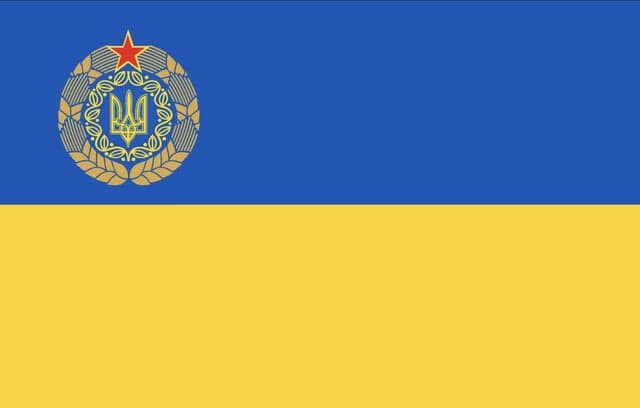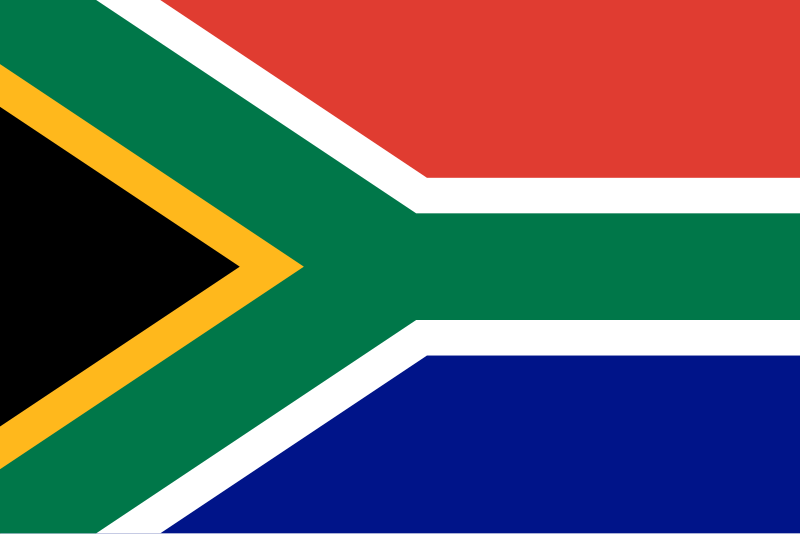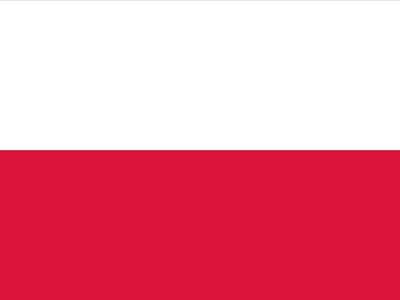
Navigating YouTube Monetization Challenges for Ukrainian Creators
summary
YouTube Monetization in Ukraine refers to the process by which Ukrainian content creators earn revenue from their videos on the platform, primarily through the YouTube Partner Program (YPP). To qualify for monetization, creators must meet specific eligibility criteria, such as subscriber counts and watch hours, while adhering to YouTube's Community Guidelines and Advertiser-Friendly Content Guidelines. These policies ensure that content aligns with advertiser preferences and legal requirements, enabling creators to earn income through ad revenue, sponsorships, and other monetization tools like Super Chat and channel memberships[1][2][3]. The landscape of YouTube monetization in Ukraine has been shaped by both local and global factors, including the Russia-Ukraine conflict. In response to the 2022 invasion, YouTube restricted monetization for pro-war and Russian propaganda content, indirectly affecting Ukrainian creators by reshaping the platform's ecosystem. Despite these challenges, Ukrainian creators have adapted by targeting domestic, diaspora, and global audiences, leveraging the platform to sustain their channels and businesses[4][5]. The conflict has also highlighted the resilience of Ukrainian creators, many of whom have diversified their income streams to include sponsorships, affiliate marketing, and merchandise sales[6][7]. Ukrainian creators face unique challenges, such as fluctuating ad revenue, evolving platform policies, and the impact of geopolitical events on content moderation. For instance, YouTube has paused monetization for content that exploits or dismisses the war in Ukraine, citing ethical and misinformation concerns[8][9]. Additionally, legal changes in Ukraine, such as the Digital Content Law adopted in 2023, have introduced new regulations governing digital assets and services, requiring creators to navigate a more complex legal framework[10][11].
Despite these hurdles, Ukrainian YouTube continues to thrive, driven by innovative content and strategic adaptations. Creators have tapped into lucrative international markets, such as the United States and Canada, where earnings can exceed '20 per 1,000 views[12]. The platform remains a vital tool for economic recovery and cultural promotion, with Ukrainian creators playing a key role in shaping the digital media landscape both locally and globally[13][14].
Overview
YouTube monetization in Ukraine, as in other regions, is governed by a set of policies and guidelines designed to ensure the platform remains safe, advertiser-friendly, and aligned with legal requirements. Content creators in Ukraine must adhere to YouTube's Community Guidelines and Monetization Policies to participate in the YouTube Partner Program (YPP), which is a prerequisite for earning revenue from their content[1]. These policies are enforced to maintain the quality and integrity of the platform, ensuring that advertising and monetization efforts align with YouTube's standards[2][3].
To qualify for monetization, Ukrainian creators must meet specific eligibility criteria, including metrics related to channel age, growth, and engagement, such as upvotes and other relevant indicators[4]. YouTube employs an automated system to evaluate these metrics, ensuring that only channels that meet the platform's standards can apply for monetization[4]. Additionally, YouTube periodically updates its monetization policies, which can impact how creators in Ukraine and elsewhere earn income from their content[3][5]. These updates often reflect changes in advertiser preferences, community standards, or legal requirements, requiring creators to stay informed and adapt their strategies accordingly[3][5].
Content moderation plays a critical role in enforcing these policies. YouTube has dedicated teams responsible for reviewing content and making decisions on guideline enforcement. In cases of ambiguity or complexity, these teams collaborate to address gaps or refine policies to better serve the platform and its community[6]. This process ensures that monetization policies remain relevant and effective in addressing emerging challenges.
For Ukrainian creators, understanding and complying with YouTube's monetization policies is essential to avoid common pitfalls such as demonetization, channel strikes, or account termination[2]. Staying informed about policy updates and eligibility criteria enables creators to align their content with YouTube's evolving framework, fostering a positive and engaged community while maximizing their monetization potential[5]. Adaptability and resilience are key traits for creators navigating the dynamic landscape of YouTube monetization, particularly in light of the platform's periodic policy changes[3][5].
History of YouTube Monetization in Ukraine
YouTube monetization in Ukraine has undergone significant changes, particularly in response to geopolitical events and shifts in the platform's policies. Since its inception, YouTube has provided Ukrainian creators with opportunities to earn revenue from their content, enabling many to build careers and businesses around the platform[7]. However, the landscape of YouTube monetization in Ukraine has been shaped by both local and global factors.
Early Opportunities and Growth
In the early years of YouTube monetization, Ukrainian creators began exploring the platform as a viable source of income. The ability to earn money from ad revenue, sponsorships, and other monetization tools attracted a growing number of content creators. Ukrainian YouTube became a hub for diverse content, ranging from entertainment and education to entrepreneurship and marketing[8]. This period saw the rise of influential creators who leveraged the platform to reach both local and international audiences.
Impact of the Russia-Ukraine Conflict
The full-scale Russian invasion of Ukraine in 2022 marked a turning point for YouTube monetization in the region. In response to the crisis, YouTube took measures to curb Russian propaganda and pro-war content, removing tens of thousands of videos and restricting monetization options for Russian-based creators[9]. While these policies primarily targeted Russian content, they also indirectly affected Ukrainian creators by reshaping the platform's ecosystem. Ukrainian creators, however, continued to have access to monetization tools, allowing them to sustain their channels and businesses[7].
The conflict also led to a shift in audience dynamics. As Russian creators faced restrictions, Ukrainian creators began to pivot toward domestic, diaspora, and global audiences. This shift opened new opportunities for Ukrainian content creators to expand their reach and diversify their revenue streams[10]. Additionally, the crisis highlighted the resilience of Ukrainian entrepreneurs, such as Anton Kosheliev, who transitioned from traditional businesses to successful YouTube ventures, demonstrating the platform's potential for economic recovery and growth[11].
Current Trends and Future Prospects
In recent years, Ukrainian YouTube has evolved into a dynamic platform for both creators and marketers. The platform has become a "window of opportunity" for content authors and brands alike, offering new avenues for monetization and audience engagement[8]. With earnings potentially exceeding '20 per 1,000 views in certain markets, Ukrainian creators have tapped into global audiences, particularly in regions like Canada and Germany, where content preferences align with those of US viewers[12].
Despite challenges such as declining ad revenue on a global scale[13], Ukrainian YouTube continues to thrive, driven by innovative content and strategic adaptations. Experts predict a new stage in the development of Ukrainian YouTube, with increased opportunities for creators to monetize their content and build sustainable careers[8]. As the platform evolves, Ukrainian creators remain at the forefront of leveraging YouTube's monetization tools to navigate both local and global challenges.
Monetization Requirements
To participate in the YouTube Partner Program (YPP) and monetize content on YouTube, creators must meet specific eligibility criteria. These requirements are designed to ensure that only active and engaged creators who adhere to YouTube's guidelines can earn revenue from their content. Historically, creators needed 1,000 subscribers, 4,000 hours of public video watch time in the last 12 months, or 10 million valid public Shorts views in the last 90 days to qualify for YPP[14][15]. However, in June 2023, YouTube announced a reduction in these thresholds, lowering the requirements to 500 subscribers, 3,000 hours of public video watch time, or 3 million valid public Shorts views in the last 90 days[14]. This change aimed to make monetization more accessible to a broader range of creators, particularly those producing Shorts content[14].
In addition to these thresholds, creators must comply with YouTube's Community Guidelines and Advertiser-Friendly Content Guidelines[16][1]. Videos that violate these policies may have limited or no ads displayed, even if the channel is part of YPP[16]. Furthermore, YouTube may disable monetization for channels that have been inactive for six months or more, as part of its effort to support creators who are actively engaged with the platform and their communities[17].
For Ukrainian creators, the ongoing war has introduced additional considerations. YouTube has explicitly stated that content exploiting, dismissing, or condoning the war in Ukraine is ineligible for monetization until further notice[18]. This policy aligns with YouTube's broader commitment to maintaining a safe and advertiser-friendly environment while addressing the complexities of global events[18].
Creators seeking to join YPP must also ensure their content aligns with YouTube's evolving policies, which are periodically updated to address gaps or provide clearer guidance[6]. For example, recent updates to the Advertiser-Friendly Content Guidelines have clarified rules around adult content, breastfeeding, and harmful or dangerous acts, including vaccination-related content[18]. These updates reflect YouTube's ongoing efforts to balance creator flexibility with advertiser and community expectations[18].
Revenue Streams for Ukrainian Creators
Ukrainian content creators on YouTube have access to multiple revenue streams, enabling them to monetize their content effectively. The primary source of income for many creators is through the YouTube Partner Program (YPP), which allows them to earn a share of ad revenue generated from their videos. Under this program, creators receive 55% of the ad revenue, while YouTube retains 45%[19][20]. This revenue is calculated based on RPM (Revenue Per Mille), which represents the earnings per 1,000 views after YouTube's cut[21]. Additionally, CPM (Cost Per Mille), the amount advertisers pay per 1,000 ad impressions, plays a significant role in determining earnings, with rates varying by content type, viewer location, and market demand[21][22].
Beyond ad revenue, Ukrainian creators can leverage other monetization tools available through YPP, such as Super Chat, Super Stickers, and Super Thanks, which allow viewers to tip creators during live streams or videos[23]. Channel memberships and YouTube Shopping also provide additional income opportunities, enabling creators to sell merchandise or offer exclusive content to subscribers[23][24]. Furthermore, YouTube has expanded its Shopping affiliate pilot program, allowing eligible creators to tag products in their videos and earn commissions[23].
Ukrainian creators have also found success by targeting international markets, such as India, Indonesia, Brazil, the United States, and the Middle East, where their content has gained significant traction[25]. This global reach allows them to tap into higher CPM rates in regions like the United States and Canada, where earnings can exceed '20 per 1,000 views[12]. Collaborations with other creators and participation in influencer marketing campaigns further enhance their earning potential by expanding their audience and attracting sponsorships[26].
However, challenges such as fluctuating ad revenue and YouTube's evolving monetization policies can impact earnings. For instance, YouTube's ad revenue declined by 1.9% year-over-year in recent quarters, affecting creators who rely heavily on ad income[13]. To mitigate these risks, many Ukrainian creators diversify their income streams by combining ad revenue with sponsorships, affiliate marketing, and merchandise sales[26]. By staying compliant with YouTube's content guidelines and adapting to platform changes, Ukrainian creators can maximize their earnings and build sustainable careers on the platform[24].
Challenges Faced by Ukrainian Creators
Ukrainian content creators on YouTube have faced significant challenges, particularly in the context of the ongoing war with Russia and the broader digital landscape. One of the most pressing issues has been the suspension of monetization for certain content related to the conflict. In 2023, YouTube paused monetization for content that exploits or dismisses the war in Ukraine, citing concerns over misinformation and ethical considerations[27][28]. This decision has directly impacted creators who rely on ad revenue as a primary source of income, especially those in Ukraine and neighboring regions[29][19].
The war has also disrupted the digital creator economy in Eastern Europe, with many Ukrainian creators forced to adapt to unstable conditions. AIR Media-Tech, a company with a significant presence in Ukraine, reported that over 500 Ukrainian creators have been affected by the conflict, leading to shifts in content strategies and audience engagement[30]. Additionally, the spread of fake news and the information war online have created a challenging environment for creators striving to produce reliable and fact-based content[31].
Legal and regulatory changes in Ukraine have further complicated the landscape. The adoption of the Law on Digital Content and Digital Services in August 2023 introduced new regulations governing digital content and services, which, while progressive, have required creators to navigate a more complex legal framework[32][33][34]. These laws aim to provide clearer definitions and protections for digital assets but have also imposed additional compliance burdens on creators.
Moreover, the broader decline in interest in traditional news content globally has affected Ukrainian creators who focus on news and current events. This trend has forced many to rethink their content strategies to maintain relevance and engagement[31]. Despite these challenges, Ukrainian creators have shown resilience, with initiatives like Creators for Ukraine highlighting the power of unity and international support for the country's creative community[35][36].
Content Strategies and Adaptations
Shifts in Language and Audience Engagement
Following Russia's full-scale invasion of Ukraine in February 2022, Ukrainian content creators on YouTube faced significant challenges and opportunities. Many creators who previously produced Russian-language content shifted to Ukrainian to align with the growing demand for Ukrainian-language media and to support national identity. This transition, however, came with financial implications. An analysis of 20 major Ukrainian YouTube accounts revealed that those who switched languages experienced an average income decrease of 24% in 2022 compared to the previous year[37]. Despite this, the shift has contributed to a broader movement promoting Ukrainian culture, history, and values, with creators producing high-quality content across genres such as travel, science, and literature[38].
Monetization Challenges and Policy Adjustments
YouTube's monetization policies have significantly impacted Ukrainian creators, particularly those targeting Russian-speaking audiences. In response to the war, YouTube restricted monetization for channels based in or targeting Russian audiences, affecting creators who relied on views from the Russian Federation[10]. Additionally, YouTube limited recommendations for certain channels and prioritized authoritative news content related to the conflict[39]. These changes forced creators to pivot their strategies, focusing on domestic, diaspora, and global audiences instead[10].
Building Resilience Through Diversification
To mitigate the financial impact of fluctuating ad revenue and policy changes, Ukrainian YouTubers have adopted diversified income strategies. Building a large subscriber base has become a priority, as it increases opportunities for sponsorships and alternative revenue streams[26]. Collaborations with other creators and participation in influencer marketing have also proven effective in expanding audiences and securing new income opportunities[26]. Furthermore, some creators have embraced fan funding and Shopping features introduced through YouTube's expanded Partner Programme (YPP), which offers earlier access to monetization tools in eligible regions[40].
Adapting to Viewer Preferences and Moderation Needs
The war has also influenced viewer engagement and content moderation practices. Ukrainian video bloggers have created safe spaces for discussions about everyday challenges, fostering a sense of community among viewers[41]. However, the increased need for moderation in online discussions has added complexity to content creation. Creators must balance engaging content with the responsibility of maintaining a respectful and informative environment[41].
High-Quality Content and Compliance
Adhering to YouTube's content policies and guidelines remains critical for Ukrainian creators aiming to monetize their channels. High-quality content, such as educational and culturally relevant videos, aligns with YouTube's monetization criteria and resonates with audiences seeking reliable information amidst the conflict[42][26]. Conversely, low-quality or non-compliant content risks demonetization, emphasizing the importance of staying informed about policy updates and adapting content strategies accordingly[5][17].
By navigating these challenges and leveraging new opportunities, Ukrainian YouTubers continue to play a vital role in shaping the digital media landscape, both locally and globally.
Tools and Resources for Ukrainian Creators
Ukrainian content creators on YouTube have access to a variety of tools and resources designed to enhance their monetization strategies and adapt to the platform's evolving policies. YouTube has introduced new monetization contracts, including options for Shorts and integrated shopping features, enabling creators to link products directly in their videos and generate revenue without viewers leaving the platform[43]. Additionally, YouTube is expanding its educational content offerings, providing creators with tutorials, courses, and learning resources to improve their skills and engage their audiences more effectively[43].
Influencer talent agencies, such as Ruthless Talent, have also played a significant role in supporting Ukrainian-speaking creators by helping them navigate the competitive landscape of digital content creation and monetization[44]. These agencies provide mentorship, networking opportunities, and strategic guidance to help creators maximize their earning potential.
The Creators for Ukraine initiative, launched by CISAC in partnership with over 220 member societies worldwide, has further bolstered support for Ukrainian creators. This global campaign not only raises funds for war victims but also mobilizes creators to amplify their voices and share their stories on platforms like YouTube[35][36].
Despite challenges such as the suspension of monetization during periods of conflict, Ukrainian creators have demonstrated resilience and adaptability, leveraging YouTube as a "window of opportunity" for both personal and professional growth[8][27]. By staying informed about YouTube's monetization policies and utilizing available tools, Ukrainian creators continue to thrive in the ever-changing digital landscape[3].
Success Stories
Ukrainian entrepreneurs and content creators have demonstrated remarkable resilience and innovation in navigating the challenges of YouTube monetization, particularly in the face of geopolitical and economic uncertainties. One notable example is Anton Kosheliev, who, after being forced to close his coffee business, pivoted to launching a video editing company from scratch. Within a year, he grew his team to six employees and leveraged his expertise to share valuable insights on entrepreneurship and success on YouTube. His story exemplifies the importance of perseverance, adaptability, and community support in building a sustainable business on the platform[11].
The Ukrainian YouTube landscape has also seen a surge in high-quality content across diverse genres, including history, literature, language, and science. This movement has not only enriched the platform but also promoted Ukrainian identity and values, creating opportunities for creators to connect with both local and international audiences[38]. Daria Bulatnikova, Head of Influencer Marketing at provid, highlights how Ukrainian YouTube has become a "window of opportunity" for content creators and marketers alike, offering new avenues for growth and monetization despite the challenges posed by shifting platform policies and external pressures[8].
Additionally, Ukrainian creators have tapped into lucrative markets like Canada, where earnings can exceed '20 per 1,000 views. By targeting audiences with similar content preferences to the U.S., Ukrainian creators have been able to expand their reach without significantly altering their content style. This strategic approach has enabled them to build stable revenue streams and establish a strong foundation for long-term success[12].
These success stories underscore the importance of adaptability, creativity, and community engagement in overcoming the hurdles of YouTube monetization. As the platform continues to evolve, Ukrainian creators remain at the forefront of leveraging its potential to educate, entertain, and inspire audiences worldwide[11][38][8].
Legal and Regulatory Environment
The legal and regulatory environment for YouTube monetization in Ukraine has evolved significantly in recent years, reflecting the country's efforts to adapt to the rapid growth of digital content and services. In August 2023, the Verkhovna Rada adopted two key legislative measures: the Draft Law on Digital Content and Digital Services (commonly referred to as the "Digital Content Law") and the Draft Law on Amendments to the Civil Code of Ukraine (the "Civil Code Law"). These laws aim to expand the range of civil rights objects and provide a legal framework for digital assets and virtual content, which are essential for the monetization of platforms like YouTube[32][34].
The Digital Content Law introduces comprehensive regulations for digital services, ensuring that content creators and platforms operate within a clear legal framework. Meanwhile, the Civil Code Law updates Ukraine's civil legislation to recognize digital content as a legitimate object of civil rights, further solidifying the legal basis for monetization activities[32][34]. These legislative changes have been widely supported and are seen as a significant step toward aligning Ukraine's digital economy with global standards.
In addition to these laws, Ukraine's media landscape is influenced by the Law "On Media," which establishes co-regulatory bodies to oversee content creation and distribution. Article 92, Part 2 of this law outlines specific areas where co-regulation can be implemented, including journalistic ethics and content moderation. The Commission on Journalistic Ethics, for example, plays a key role in self-regulating the work of journalists and content creators, ensuring compliance with ethical standards[45].
YouTube's own monetization policies also play a critical role in shaping the regulatory environment. Creators in Ukraine must adhere to YouTube's Partner Program guidelines, which include content moderation rules, copyright protection, and policies on harmful content. These policies are designed to foster a safe and transparent environment for monetization while addressing concerns about demonetization and content opacity[46][47].
Despite these advancements, challenges remain. The global nature of platforms like YouTube means that Ukrainian creators are also affected by international policies, such as restrictions on content views from certain regions, which can impact earnings[10]. Additionally, factors like Revenue Per Mille (RPM) and Cost Per 1000 Impressions (CPM) vary by region, with Ukraine's rates being lower compared to countries like the United Kingdom or the United Arab Emirates[22].
Future Prospects
The future of YouTube monetization in Ukraine appears promising, despite the challenges posed by the ongoing war and its impact on user behavior and advertiser activity. The platform's global advertising revenue growth rate in 2023 is expected to more than double compared to 2022, signaling a rebound in the digital advertising market that could benefit Ukrainian creators[48]. Additionally, YouTube has expanded its Partner Program (YPP) to include more creators, offering earlier access to fan funding and Shopping features, which could provide new monetization opportunities for Ukrainian content creators[40][49].
The war in Ukraine has significantly influenced online habits and advertising trends, with creators adapting to blackouts and shelling while continuing to produce content[50][51]. Despite these challenges, Ukrainian creators have demonstrated resilience, with platforms like YouTube providing updated monetization guidelines to address sensitive topics, such as content related to the war and adult themes[18]. These updates aim to balance advertiser-friendly content with creator freedom, ensuring that Ukrainian creators can continue to monetize their work effectively.
Moreover, the rise of alternative platforms like Rumble, which offers more accessible monetization avenues, could encourage Ukrainian creators to diversify their content distribution strategies[52]. This diversification, coupled with YouTube's evolving policies, could help creators navigate the competitive digital landscape and capitalize on emerging opportunities.
In the long term, the expansion of the YouTube Partner Program and the growing interest in digital content creation suggest a positive outlook for Ukrainian creators. By staying informed about policy updates and leveraging new monetization tools, Ukrainian content creators are well-positioned to thrive in the evolving creator economy[5][53][49].


